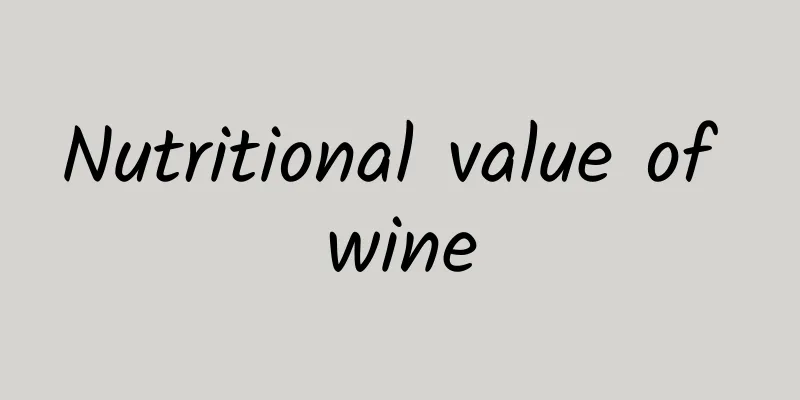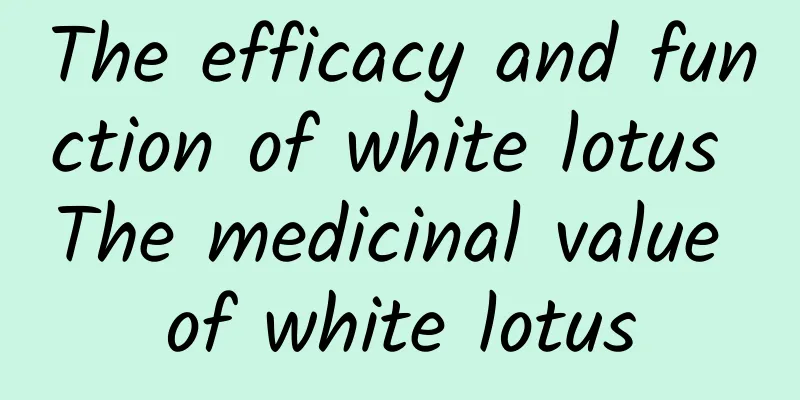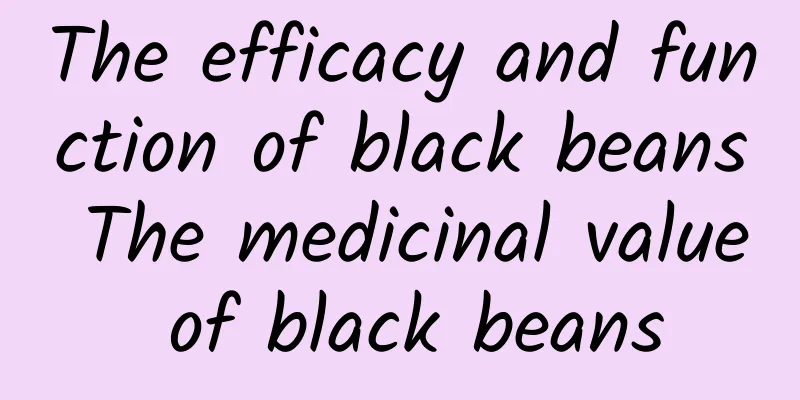Nutritional value of wine

|
Wine is a type of wine that is low in alcohol, sugar and calories and rich in amino acids, vitamins and inorganic salts. Most of the nutrients in wine come from grape juice, and the ethanol it contains comes from juice fermentation. Chemical composition of wineWine generally contains about 10% to 16% alcohol, and the ethanol it contains comes from fruit juice fermentation. Its chemical composition comes from grape juice. More than 250 components have been analyzed so far. 1. Various sugars: It contains glucose, fructose, pentose, gum and mucus, all of which are essential sugars for the human body. 2. Organic acids: It contains tartaric acid, malic acid, succinic acid, citric acid, etc., which are substances that maintain the acid-base balance in the body and can help digestion. 3. Inorganic salts: Wine contains potassium oxide and magnesium oxide, and the ratio of potassium and magnesium in wine is exactly the same as the ratio of potassium and magnesium in human muscle. Wine has a high phosphorus content, low calcium, low sodium nitride and aluminum oxide, and contains sulfur, chlorine, iron, silicon dioxide, zinc, copper, selenium, etc. 4. Nitrogen-containing substances: The average nitrogen content in general wine is about 0.05%-0.027%. Wine contains 1 gram/liter of protein and 18 kinds of amino acids. 5. Vitamins and vitamin-like substances: Wine contains thiamine, riboflavin, niacin, vitamin B6, vitamin B12, pantothenic acid, folic acid, biotin, vitamin C, etc. Vitamin-like substances such as inositol, p-aminobenzoic acid and choline, as well as bioflavonoids. 6. Alcohols: Alcohol content is 70 ml/L to 180 ml/L. There are small amounts of fusel oil, phenylethyl alcohol, etc. Diols, polyols, esters, acetals, etc. These substances form the aroma and flavor of wine. 7. Tannins and pigments: Red wine has more tannins than white wine, and has a slightly bitter taste. Red wine contains 0.4 g/L to 0.11 g/L of pigment. After long-term storage, the color of the wine becomes darker, which is mainly because the pigment turns into colloid, precipitates, and changes color after oxidation. Nutritional value of wineWine has nutritional properties. Its chemical composition is relatively complete. It is a good source of inorganic mineral nutrients and organic vitamins, and can provide a certain amount of calories to the human body. The thiamine contained in wine can restore fatigue and excite nerves; riboflavin can promote cell oxidation and reduction, prevent mouth ulcers and cataracts; niacin can maintain skin (skin products, skin information) and nerve health, and play a beauty role; vitamin B6 is very important for protein metabolism, making fish and meat easy to digest; folic acid and vitamin B12 are beneficial to the regeneration of red blood cells and the production of platelets. |
<<: Will eating grapes cause internal heat?
Recommend
How to make delicious kidney bean porridge? Homemade recipes for kidney bean porridge
Kidney beans are very nutritious legumes, also kn...
How to cook ten-grain porridge? Who should not eat ten-grain porridge?
Ten-grain porridge is a very popular health-prese...
How to soak lemon and rock sugar? The correct way to soak lemon and rock sugar
Many people have drunk lemonade, and the lemonade...
The efficacy, function and edible method of persimmon leaves
Everyone must have seen a persimmon tree, and you...
How is Salzburg Red Bull? Salzburg Red Bull review and website information
What is the website of Red Bull Salzburg? FC Red B...
The efficacy and function of bayberry wine
Bayberry wine is a kind of wine made by soaking b...
Can pregnant women eat okra? What are the benefits of eating okra for pregnant women?
Can pregnant women eat okra? Pregnant women shoul...
Ingredients and steps for making cucumber pancakes
Cucumber pancake is a kind of pancake made of fre...
How to eat wild mushrooms? The best way to eat wild mushrooms
Wild mushrooms mostly grow in mountain forests. T...
How is United National Bank? United National Bank reviews and website information
What is the website of Union National Bank? Union ...
How to make Hudou delicious
Hudou is a dish with a fresh taste and rich nutri...
The efficacy and function of wild hawthorn
Wild hawthorn is rich in vitamins and organic aci...
The efficacy and function of white pomegranate The medicinal value of white pomegranate
White flower pomegranate is a kind of pomegranate...
What foods are good for liver health?
I know that the health of a person's liver is...
The efficacy and function of Gardenia root
Gardenia root is the root of the plant Gardenia j...









